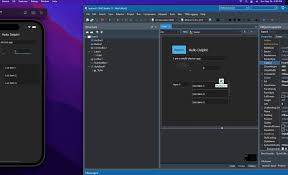New trends in making AI useable for non-tech people – By Aditya Abeysinghe
 UI drag and drop to build apps
UI drag and drop to build apps
Typical Artificial Intelligence (AI) applications require coding different sections, manually testing and merging sections. However, with many businesses changing business processes from traditional to an AI-based method, coding each section of an app is a time-consuming task which requires prior expertise with coding. Therefore, businesses are using new methods to construct and test apps using user interface (UI) elements. With these kind of methods UI elements are used to construct an app by drag-and-drop elements. Usually, for large scale apps some level of coding is required to enhance functions and integrate with other sections. For small scale apps the entire app can usually be created without coding.
Automated tests
Testing is one method of detecting issues in apps. Testing could be carried out during system design, system development, or during the testing phase of an app. The usual method of testing includes writing several cases for which an app could break or for which an app should not break and then validating them using the functionalities. However, this often requires experience with manual testing and is time-consuming. Automating these cases using a scheduler which runs based on a schedule has been used for some time with many apps. Automated tests for AI is new and is now a widely used way to reduce time and errors with manual methods.
Why use automated app building?
 Automated methods of building reduce the overall time to build apps as most sections are built with already available components. It also minimizes repetitions in the code by using already available components which makes fixing issues easy as mostly user defined sections need to be validated using tests. Therefore, apps could be designed and made available to public within less time. This means users can use fixes fast and businesses can release features faster.
Automated methods of building reduce the overall time to build apps as most sections are built with already available components. It also minimizes repetitions in the code by using already available components which makes fixing issues easy as mostly user defined sections need to be validated using tests. Therefore, apps could be designed and made available to public within less time. This means users can use fixes fast and businesses can release features faster.
With drag-and-drop components, businesses require less technical members to design, develop, and test to build AI-based apps. This means higher profits from apps as less costs for teams and maintenance is required. This is beneficial for businesses with small teams and with less budget. Also, people with less technical expertise can build and maintain apps which reduces issues with different teams in a typical business.
Where is automated app builds useful?
Automated app building is mostly used in less complex apps as components used to build these apps are built into visual designers. Less changes are often required to built-in components which makes drag-and-drop and automated builds a fast method to produce apps. Simple functionalities including object recognition, classification, and anomaly detection are some uses of drag-and-drop building. Automation testing are used in many use cases in small to large scale AI systems.
For complex apps, automated app building is not a suitable method as changes that cannot be made to drag-and-drop components are often needed to create the expected features. Most AI apps also use inner AI models which cannot be built using drag-and-drop and automated app designing as they require training with datasets. Also, most apps which use AI do not have models within the app and depend on several remote services.
Image courtesy: https://blogs.embarcadero.com/







